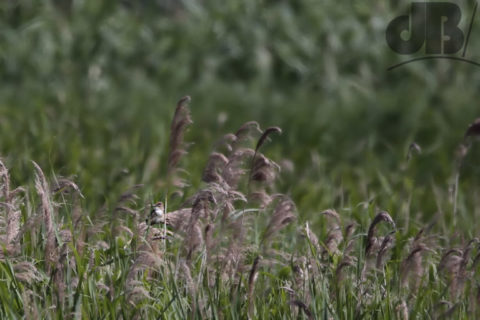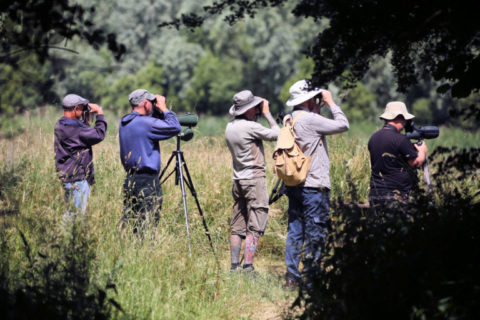UPDATE: Lee Evans (not that one) told me via the UK Bird ID Facebook group that it is likely this is the same GRW that has been sighted a few times over the last few years. According to CamBirds blog there was one at Paxton Pits in 2016, one at Eldernell (RSPB Nene Washes) in 2014. Life expectancy for this species is 1-5 years. So it could be the same male.
If you’re a birder in or around Cambridge, you will know via CamBirds, social media, word-of-mouth and other information routes that there is a vagrant in our midst. He’s been here since about the 15th June and is still posturing and shouting just outside the village of Fen Drayton. We have to assume he’s lost, as he is usually only to be found on mainland Europe and Asia and spends his winters swanning around sub-Saharan Africa. That said, climate change, changes in farming practices, and other environmental concerns are already disrupting bird behaviour, so who knows?

He is a Great Reed Warbler and has been showing well on the southern edge reed beds of Elney Lake at RSPB Fen Drayton.
Acrocephalus arundinaceus to give him his scientific name is the biggest of the diffuse group of birds we call the European warblers. His calling and posturing for a mate are most likely to be entirely in vain as it is very unlikely that a female will have accidentally ended up here too. Anyway, his presence is cause for celebration among local birders who have been out in force since mid-June to catch a glimpse of him and to hear his syrinx in action.
I got some distant shots of him through the summer haze, but it was too warm for that kind of zoom photography. Still, it’s a record shot. Much better is the shot I got of a few of the birders standing patiently gazing through scopes and bins.
